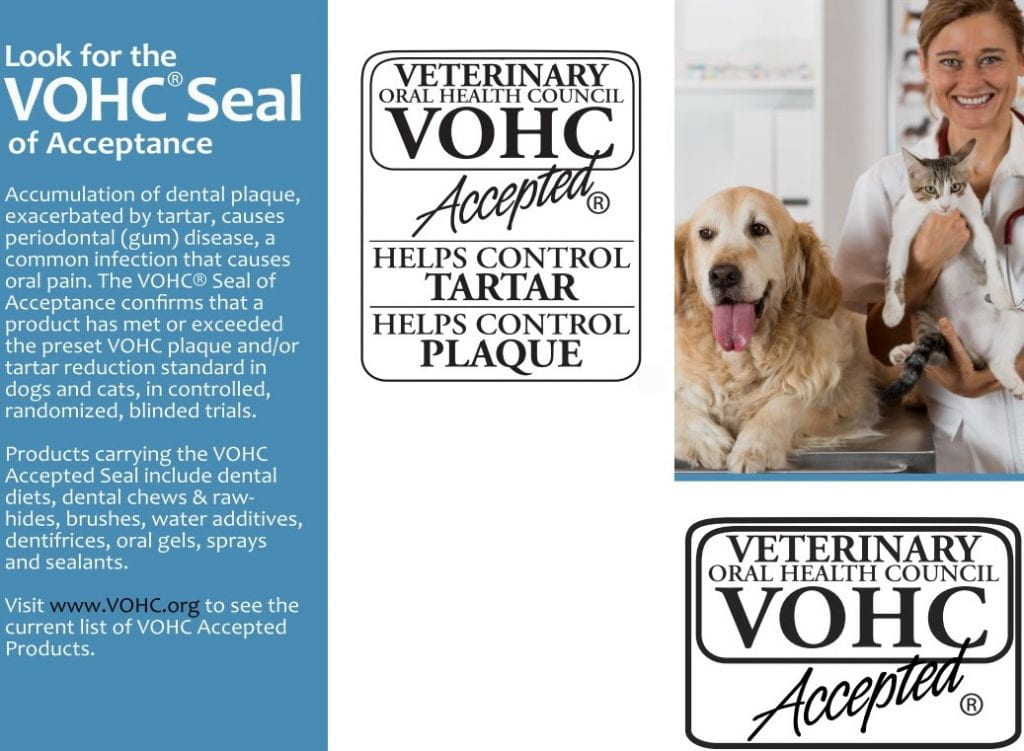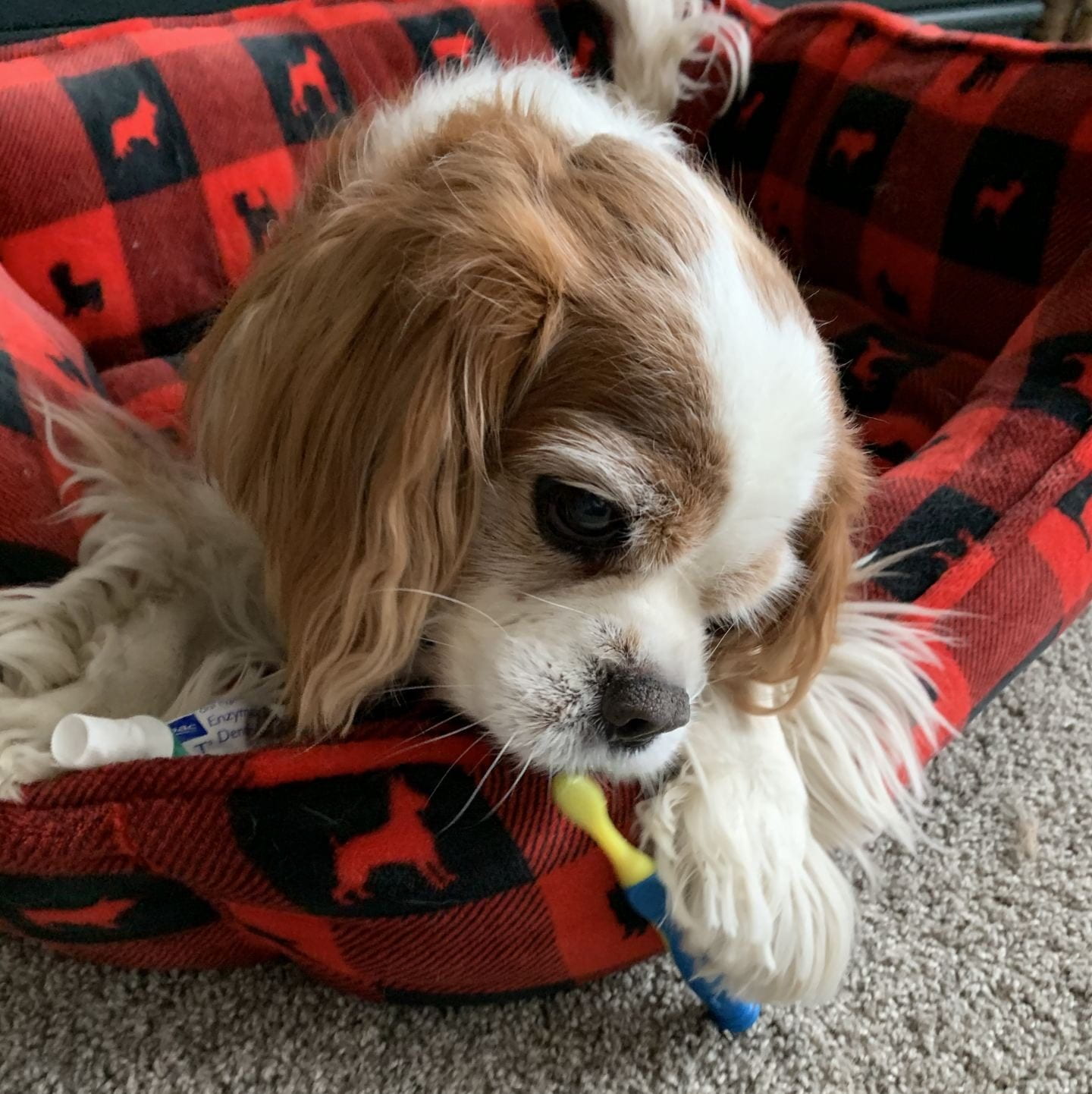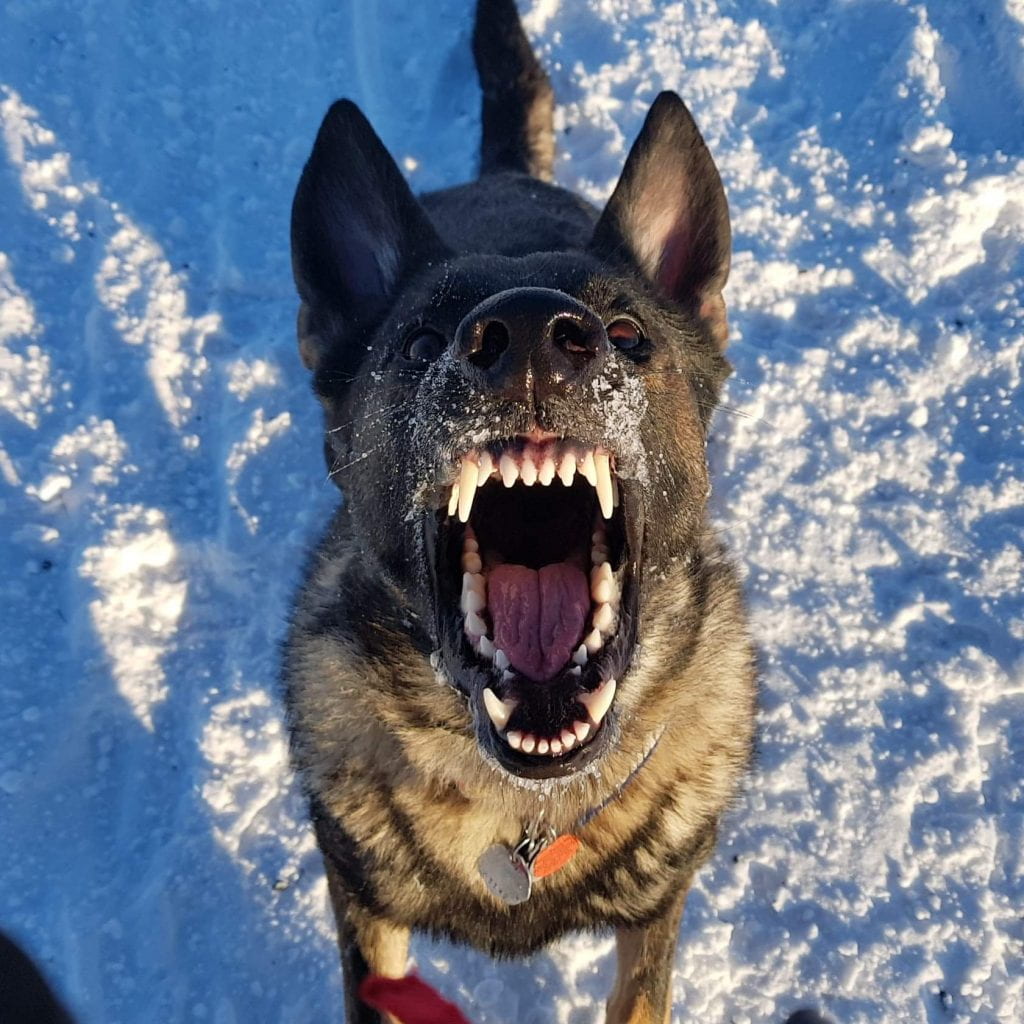Takeaways from pet dental health month
What do you know about dental care for your pet?
Dental health is an incredibly important part of your pet’s health, whether they are small or large! It is important that gums and teeth are examined by your veterinarian at least once yearly. This will help to ensure early signs are detected and addressed to help maintain good oral health in addition to providing an opportunity to discuss prevention such as tooth brushing and regular dental cleanings. About 90% of patients will develop periodontal disease in their lifetime and this can cause mild to extreme discomfort. Additionally, dental disease will cause oral infections, thus leading to daily production of harmful bacteria that can enter the blood. This causes the release of inflammatory mediators into the bloodstream and subsequently negatively affects the vital organs, including the heart, lung, kidney, and liver.
Plaque is a soft bacteria-rich layer that forms rapidly on the surface of teeth. The bacteria in mature plaque can cause gingival inflammation, therefore starting the process that results in periodontal disease.
Calculus (also known as tartar) forms as hardened plaque onto the tooth’s surface. It is resistant to removal by chewing or brushing and can increase plaque development, exacerbating the development of periodontal disease. Once calculus builds up on teeth, the only way to remove it safely is a complete dental prophylaxis.
Importance of Prevention
Although companion animals do not typically form cavities like their human companions, dental issues are the second most common health malady observed in veterinary clinics.
Halitosis (stinky breath) is the most common presenting symptom noticed by pet parents but dental disease in companion animals can also appear as red or swollen gums, as well as darkened appearance of teeth due to calculus formation. Oral health is often linked to the overall health of animals. For example, a decrease in appetite or refusal of food may be an indicator of advanced oral health issues. Dental disease can often be painful, and this can affect your pet’s appetite, behavior, and overall quality of life. Additionally, dental disease will lead to periodontal disease, which not only effects the gums, but also the jawbone, consequently leading to tooth and even bone loss.
By 3–years of age, up to 85% of dogs show signs of dental disease, which can be a particular problem in small breed or senior dogs. Since good oral health of cats and dogs involves the collaboration of the owner, the veterinarian and the pet, education is key.
When homecare is insufficient and the pet requires dental treatment, pets will need to undergo a full anesthetic, both to ensure safety and to allow for an examination and treatment above and below the gum-line.

Methods of Prevention
Chip off the Old Tooth: Be aware of the products available for pet dental health and consider the following.
- Many products marketed for dental health are ineffective at slowing the progression of, or preventing, dental disease.
- To verify if the product is effective and safe for your pet when selecting these products on your own, ensure that the product carries a Veterinary Oral Health Council (VOHC) seal
- The VOHC seal demonstrates that the product has been shown to prevent plaque and/or tarter. You can find VOHC approved products on their website!
- Check with your veterinary healthcare team before starting any new product. If your pet has existing dental disease, these products may be ineffective, or even painful for your pet!

Dental diets
Our favourite method to help with your pet’s oral health are dental diets! These are kibbles that are developed with a unique shape, size and composition, clinically proven to reduce dental disease. It is the best means of prevention for a busy household, as simple as feeding breakfast!
- Most pets swallow their food whole, so a large kibble encourages chewing
- It’s not just size! These kibbles may be composed of a special fiber matrix which resists crumbling as teeth bite into them, helping to clean the tooth’s surface as pets chew.
- Some diets will include ingredients which bind to excess calcium in saliva, further preventing the formation of calculus. An example of one of the many ingredients is sodiumhexametaphosphate. Think of this as mouthwash and toothpaste for your pet!
- Contrary to popular belief, a typical dry kibble will not provide beneficial effects for oral health
Tooth Brushing
Just like our own oral care, the best means of prevention of dental disease is daily brushing. There are a variety of toothbrush options such as the regular toothbrushes and finger brushes. Toothpaste for cats and dogs are specifically designed for their use, so verify with your veterinary healthcare team before you start brushing!

It’s reported that only 8% of dog owners brush regularly, and only 4% of cat owners. It is something that owners find hard to accomplish with their busy schedules, and it requires training, consistency and patience.
With brushing, the incidence of periodontal diseases and gingivitis decreases by 25% when brushed daily or every other day, and 10% when brushed one weekly in dogs (Small Animal Medicine and Surgery, 2016). Although it may seem dauting, all pets can be trained to enjoy daily brushing.
Chews
This method of prevention can be a real treat! Using dental chews can be a fun way to reduce tartar accumulation for your pet, especially if used in addition to brushing and dental diets.
Many cats and dogs enjoy the taste of dental toys, treats, and chews which encourages the action of chewing. Ideally, they will thoroughly chew the treat, scrubbing the surface of some molars.
Not all treats and chews can be helpful and beware that some may cause more harm than good. Here are some considerations when providing your pet dental chews, treats, and toys:
- Damaged toys should be immediately discarded
- If not thoroughly chewed, they may result in esophageal and even intestinal obstruction and thus alternative options should be offered
- Hard toys, chews, and bones may also cause dental fractures, chips, and other painful damage to teeth, often resulting in extraction or a referral to a veterinary dental specialist for treatment.
- As the mechanism of action for dental chews and treats is primarily due to the mechanical force and movement of chewing, the incisors, premolars, and canines may not fully benefit.
Water Additives
- This can be used as a component of dental care to help reduce the formation of bacteria that causes plaque and tartar.
- Ask your veterinary healthcare team for more guidance on which water additives to choose.
- When incorporating water additives, it is important to also provide a second bowl of fresh, clean water without the additive.

Top Tooth Picks
- Dental disease is a serious concern for companion animals impacting their overall wellbeing. Maintenance and care of your pet’s dental health can be made easy by using one, or a combination, of the methods described above.
- Although these methods mentioned above can prevent dental disease, they will not be 100% effective at the prevention of dental disease. They will only help slow the progression, so it is important that pet owners expect that dental prophylaxis will be a part of their pet’s preventative healthcare plan.
- Please reach out to your veterinary healthcare team with questions or concerns and always check with your veterinarian before introducing a new dental care product or routine.
- Dental care is an important part of your pet’s health, but it is not a replacement for medical treatment.
By following the dental FLOSS-ophy, “an apple a day”, and incorporating dental care into your pet’s daily routine, you may be able to prevent, or delay, the onset of dental disease and maintain healthy canines (and all teeth) for your canine (or feline)!
Written by Olivia Chiu, BScH, MSc Student (Department of Clinical Studies)
Edited by:
S. Verton-Shaw, RVT, VTS (Nutrition)
Dr. A. Verbrugghe DVM, PhD, Dip ECVCN
Dr. C. Grant, DVM, DVSc
References:
Most (95%) Pet Owners Brush Their Own Teeth Daily, But Few Brush Their Dog’s (8%) or Cat’s (4%) Teeth on a Daily Basis. (2016, February 1). Retrieved February 01, 2021, from https://www.ipsos.com/en-ca/news-polls/most-95-pet-owners-brush-their-own-teeth-daily-few-brush-their-dogs-8-or-cats-4-teeth-daily-basis#:~:text=a%20Daily%20Basis-,Most%20(95%25)%20Pet%20Owners%20Brush%20Their%20Own%20Teeth%20Daily,Teeth%20on%20a%20Daily%20Basis
Effect of brushing teeth on plaque, calculus accumulation, and gingivitis in dogs. (2016). Advances in Small Animal Medicine and Surgery, 29(3), 4–5. https://doi.org/10.1016/j.asams.2016.03.003
Niemiec, B. (2018). Monitoring Oral Pain With Dental Disease in Pets. Advances in Small Animal Medicine and Surgery, 31(1), 1–2. https://doi.org/10.1016/j.asams.2018.01.001


